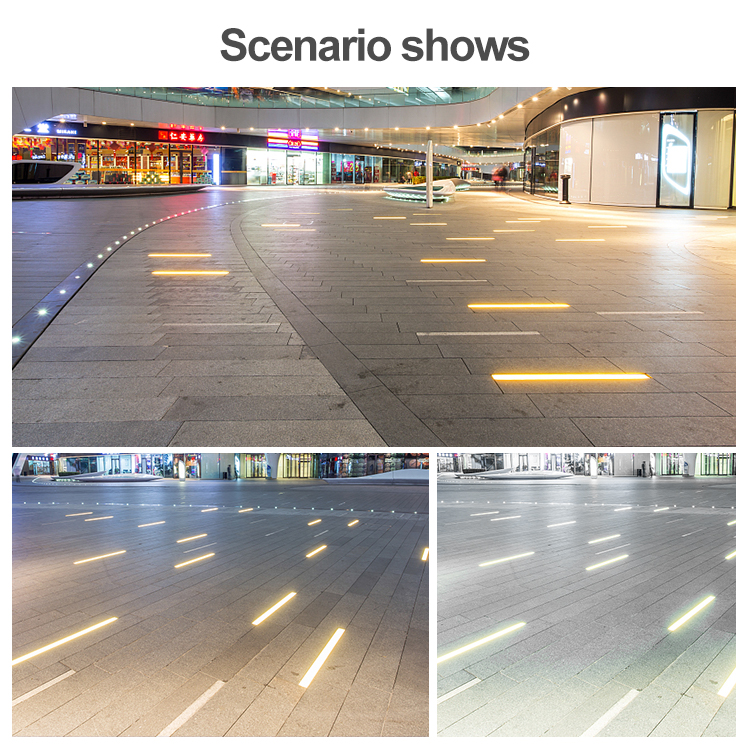
Linear Underground LED Lights for Outdoor Landscape
For contemporary architectural and landscape lighting, linear underground lights offer a sleek, modern solution that merges visual harmony with high-output illumination. Designed for wall grazing, façade accenting, pathway marking, and edge lighting, these fixtures integrate into the ground in a slim, linear form—creating clean lines of light with minimal intrusion.
As a leading manufacturer of outdoor LED lighting, we supply a full range of IP67/IP68-rated linear underground lights, engineered for performance, durability, and minimalism. Whether used to light up walls from below or to outline a modern garden path, our linear in-ground LED fixtures add structure, style, and safety to any exterior environment.
What Is a Linear Underground Light?
A linear underground light is a recessed ground-mounted LED fixture with a rectangular or bar-shaped design, typically ranging from 200mm to over 1000mm in length. Unlike round or square in-ground lights, linear models provide continuous, directional illumination, often used for architectural wall washing, guiding lines along walkways, or highlighting building features.
These lights are embedded flush with the ground, making them walkable, weatherproof, and visually seamless.
Key Features of Linear Underground Lights
✅ 1. Architectural Beam Design
Linear LED buried lights are ideal for wall grazing or washing, creating elegant lines of light on vertical surfaces or along structural edges.
✅ 2. Durability for Outdoor Use
Our models feature IP67/IP68 protection, stainless steel or anodized aluminum bodies, and tempered glass covers—designed to handle harsh weather, water, dust, and pressure.
✅ 3. Uniform Lighting Output
Thanks to high-density LED chips and precision optics, these fixtures deliver smooth, shadow-free illumination across long lengths, minimizing visual breaks.
✅ 4. Low Profile, High Style
With widths as narrow as 25mm and shallow recessing depth, linear underground lights remain discreet and flush, fitting into tight architectural grooves, stone, or decking.
✅ 5. Multiple Beam Options & RGB Control
Choose from narrow spot beams to wide flood beams, RGB/RGBW color options, and smart DMX or DALI control systems to match any creative lighting design.
Applications of Linear Underground Lighting
-
Architectural Wall Washing
Light up façades, retaining walls, and pillars from the ground up. -
Pathways and Walkways
Create linear guides or borders with soft, continuous lighting. -
Staircases and Ramps
Recess into stair risers or slope bases for a futuristic look. -
Driveways and Entrances
Outline boundaries with slim, load-resistant linear lights. -
Public Spaces & Urban Design
Add structure and flow to parks, plazas, shopping centers, and hotels.
Linear Underground Lamp, Linear Inground Light, Linear Ground Light, Linear Step Light, Linear Buired Light
Jiangmen Synno Lighting Co., Ltd. , https://www.synnoled.com